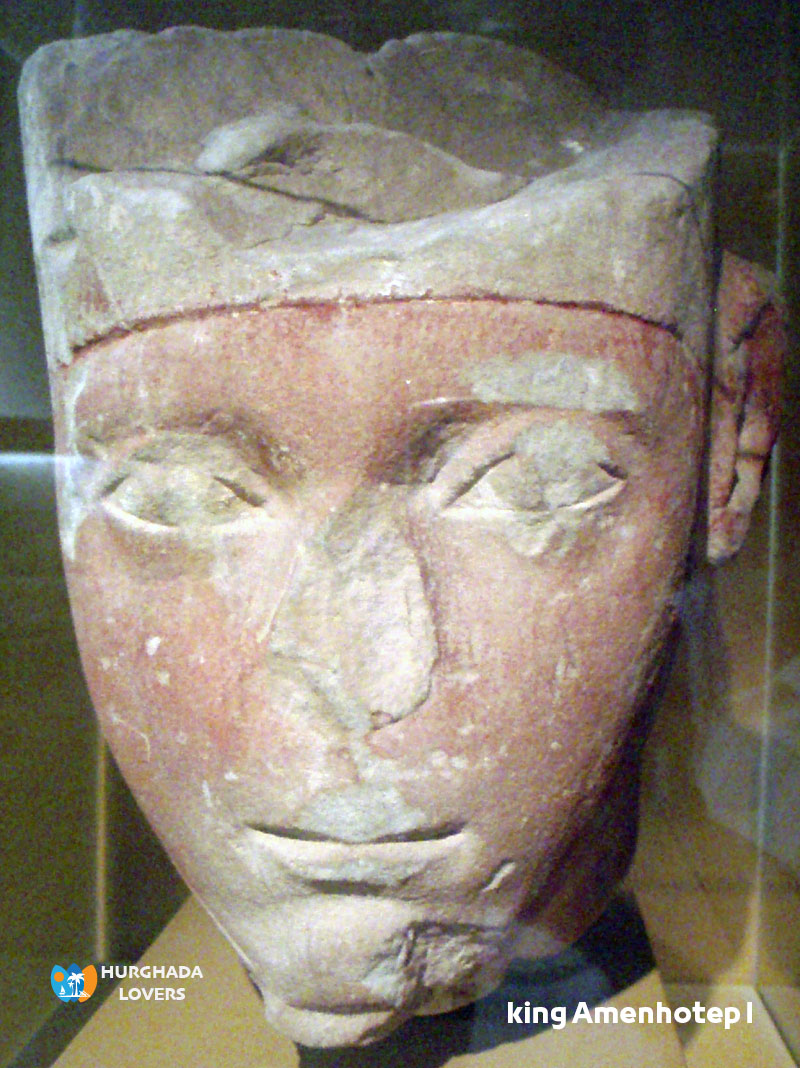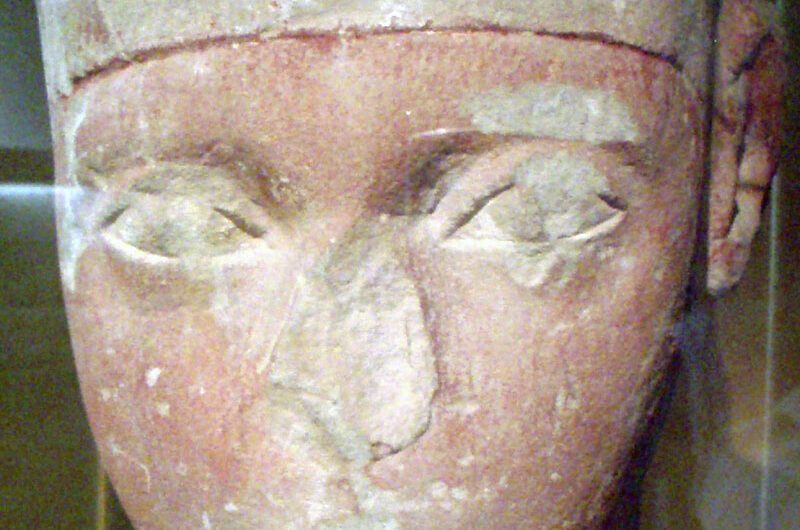King Amenhotep I – Egyptian Pharaohs kings – Eighteenth Dynasty of Egypt – The New Kingdom
Facts about the civilization of Ancient Egypt and the history of King Amenophis I The most famous famous kings of the ancient Egyptian Pharaohs in the New Kingdom of Egypt.
Secrets, biography, his achievements and his Pharaonic Egyptian Monuments, tomb, Mummy, life and death of the king and more about Ancient Egypt History.
King Amenhotep I
Ruling period in Ancient Egyptian Government: 1550–1528 BC
Date of birth: 1600 BC
Date of death: 1500 BC
Father: King Ahmose I
Mother: Queen Ahmose Nefertar “Female Pharaohs”
Wife: Queen Iahhotep, the most famous Pharaonic queen of Egypt, and Queen Ahmose-Meritamun.
Archaeology:
- Stone statues to indicate the development of the art of Sculpture in Ancient Egypt,
- Tomb of Amenhotep I | KV39, Valley of the Kings, Luxor, “Thebes“
- The king’s mummy is in The Royal Cache of Deir el-Bahri,
- Temple in Al-Arabah “Mortuary Temples“, buried in the Abydos area in Sohag, southern Egypt,
- Archaeological buildings in Gebel el-Silsila, Elephantine Island, The Temple of Kom Ombo area, and Tombs of El Kab Or Elethya, the most famous Egypt Archaeological Sites, in Aswan.
King Amenhotep I facts
- The Egyptian Pharaoh King Amenhotep I was the son of the valiant King Al-Sha’ir in his battles, Ahmose I, and then he was the second king of the Pharaohs during the reign of the Eighteenth Dynasty..
- He ruled the country in the period from 1525 BC. He remained in power until 1504 BC. This happened after Ahni’s mother was able to expel the Hyksos from Egypt permanently.
- During his rule of the country, King Amenhotep I married two of his daughters, Iahhotep and Ahmose-meretamun..
- Since his first sister had already given birth to his son, Prince Amenemhat, that young pharaoh who had died while he was still a child, and then King Amenhotep I had died and at that time he had no heir to the throne..
How did he take over the administration of the country during his rule?
- In fact, King Pharaoh Amenhotep I was the second son of the valiant King Ahmose I and received the Coronation of the Pharaohs.
- Then, upon the death of the valiant King Ahmose I, Queen Ahmose Nefertari became the direct and sole guardian of her son, King Amenhotep I, and she remained so until he was able to reach the appropriate age, and accordingly he was able to ascend after that until he assumed the throne..
- Then, immediately after he assumed the reins of government in the country, he carried out many operations in order to directly defend Egypt’s borders from the western side, as in the Geography of ancient Egypt.
- The Libyans had seized the opportunity a year after the death of King Ahmose and began thinking about conquering the entire delta region..
- So King Amenhotep I went to them, as he was already at the head of the Military of ancient Egypt, and then he succeeded in completely defeating the Libyans and their allies..
Ancient Pharaonic monuments belonging to King Amenhotep I
In fact, King Pharaoh Amenhotep I, since his youth and during his reign as well, was interested in both Music in Ancient Egypt and Architecture in ancient Egypt, and he had already begun building his own temple in both the Karnak Temple complex area in Luxor and the Abydos area in Sohag..
It also has many of the most important Egyptian Antiquities located within Upper Egypt in both categories, Kom Ombo, and even in the Cape region, which is located approximately 83 km south of the city of Luxor and at the same time located on the right shore on the banks of the Nile River..
This region was at a certain time a very large and important religious center, as in the Ancient Egyptian religion, and at the same time it was the capital of the third region located in Upper Egypt..
This is not all that King Amenhotep I did. Rather, he built a huge ancient temple, the “Egyptian Temples,” whose purpose wasHelpIt was made as a tribute to his father, Al-Malak Al-Awni, Ahmose IAnd he created it inAl-Araba Al-Madfauna area.
It also had many of those Pharaonic antiquities located near the Jabal al-Silsilah area between Kelt and Luxor GovernorateAswan,
It was also King Pharaoh Amenhotep the First who is credited with separating that large funerary temple from the tomb in order to succeed in protecting that Pharaonic tomb of his from both the Ancient Egyptian Grave Robbers in the era of widespread chaos and Revolutions in Ancient Egypt.
He also considered that both Amenhotep and his mother, Queen Nefertari, were like two gods within the ancient Egyptian deities, and he placed them in the cemetery of Thebes..
Where was his mummy found?
In fact, the tomb of this Pharaonic king was found in the archaeological area of the Valley of the Kings
That king was buried in the area of the archaeological Tombs of Draa Abu Al-Naja, within the cemeteries of the nobles in Luxor, the “The Pharaonic Tombs from Thebes” in the shadow of the oldest area that represents the royal tomb in the city of Thebes..
But after that, his royal mummy was transferred to the cache located in the Deir el-Bahari area under the rule of the Twenty-first Egyptian Dynasty..
Note: Facts and secrets of the history of the Pharaoh kings will be added soon…
Hurghada Excursions Lovers, Best Travel Agency in Hurghada to provide daily tours to visit the Tourist attractions of Luxor by Hurghada to Luxor Tours and Hurghada to Pyramids Trips. Book online when you come to Hurghada, El Gouna, Sahl Hashish, Makadi Bay, Soma Bay, Egypt.

